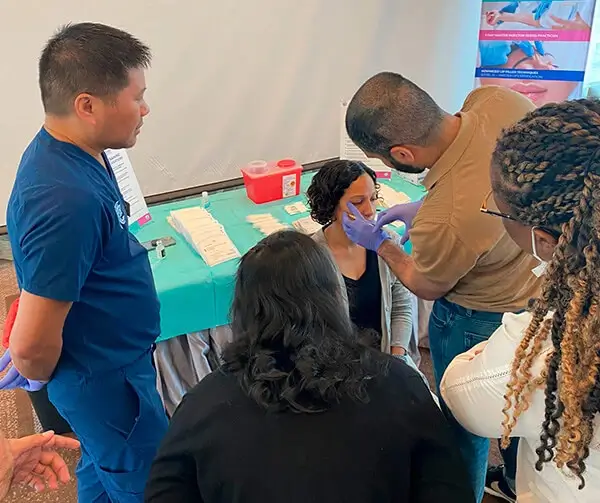What Are the Best Forehead Botox® Injection Sites?
By Dr. Stephen Cosentino
PRESIDENT OF EMPIRE MEDICAL TRAINING
Botox® is North America’s most popular brand of injectable botulinum toxin type A treatment. in North America. More than 7 million Botox treatment procedures were performed in 2018, according to the American Society of Plastic Surgeons.
That’s no surprise, given that Botox is FDA-approved to treat more than a dozen cosmetic and musculoskeletal complaints.
One of the most popular areas to inject Botox is the forehead, where years of repetitive facial expressions can produce deep, horizontal forehead lines over time. As a temporary, minimally invasive anti-aging treatment, forehead Botox is second to none.
Where can Botox be injected on the forehead, and which conditions can forehead Botox address? Here’s what you need to know.
Forehead Botox Injection Sites
When we talk about forehead Botox, we’re really talking about two distinct groups of facial muscles:
- The frontalis muscles, which take up most of the forehead above the brow
- The glabellar complex, which includes the procerus, corrugator supercilii, depressor supercilii, and orbicularis oculi muscles
Some stretch the definition of “forehead Botox” to cover the area around the eyes, so we’ll cover that as well.
Forehead Botox for Frown Lines (Glabellar Lines)
This was one of the earliest FDA-approved uses for Botox. Also known as “11” lines, frown lines appear in the glabellar complex, between the eyes. By paralyzing specific muscles within the complex, Botox temporarily reduces frown lines and restores a more youthful, less “angry” appearance.
Dosing is typically 10 to 25 units spread across several injection points, depending on the patient’s anatomy, the specific glabellar muscles being targeted, the depth of the lines, and other factors. Results generally appear within days and last three to six months.
Botox Injection for Horizontal Forehead Lines
Botox is a popular treatment for horizontal forehead lines, both along the browline and further up the forehead. It temporarily limits movement of the frontalis muscle, smoothing these age-related lines.
This treatment area typically requires multiple forehead Botox injection sites, with the precise injection pattern determined by the position of the lines and the patient’s anatomy. Dosing ranges from 10 to 30 units spread out over four or more injection sites. Some providers prefer 1 to 2 units per site spread across 10 or more sites; others use up to 4 units per site across a smaller number of sites.
Botox Injection for Crow’s Feet
While it’s debatable whether the eye corners count as part of the forehead, it’s not debatable that Botox is a useful treatment for the fine lines known as crow’s feet.
Here, Botox may be combined with hyaluronic acid dermal fillers to add volume and restore a soft, plump, youthful look to the area. Dosing ranges from 5 to 15 units per side.
Possible Side Effects and Complications of Forehead Botox
Forehead Botox is regarded as low-risk and effective, but that doesn’t mean it has no potential side effects or complications. These are generally mild and may include:
- Temporary soreness or pain at the injection site
- Runny nose and other cold-like symptoms
- Low fever or chills
- Headache
More serious complications are rare but can include urinary incontinence, excessive sweating, muscle pain or weakness, and blood clots. Working with a board-certified provider who has completed advanced Botox and filler training reduces the risk of serious complications.


